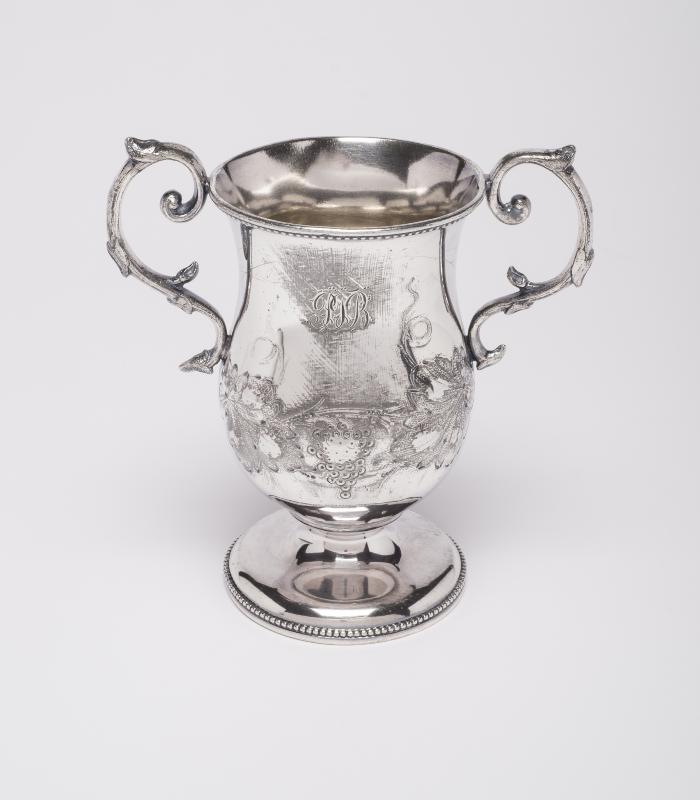Food service: Silver spoon holder with initials of P. T. Barnum
Spooner
1845 – 1870 (Date manufactured/created)
5 in H
X
5 in W
X
4 in D
Silver teaspoon holder, also called a spooner, engraved with P. T. Barnum's monogram. The spooner is shaped like a small vase, but with a scrolled handle on each side, similar to a trophy. Its purpose was to hold teaspoons, for use when tea was served. If the tea drinker wished to add milk and/or a sweetener to his or her cup of tea, the tea needed to be stirred, so having spoons at hand was a convenience.
From the Victorian period well into the 1900s, spooners were common for everyday family use, not just when company visited. Less costly than silver spooners were those made of patterned glass or various kinds of ceramic materials. These were often more simply shaped, cylindrical with straight sides and no handles nor footed base. The initials PTB are engraved on this spooner in the center of the upper third; beneath it, a design of grapes and grape leaves encircles the rounded midsection. Both the rim and the base have a beaded design around their perimeter. The beading on the rim distinguishes this from a drinking vessel such as a goblet. The maker of this silver spooner is unknown, as is the date of its creation, but it likely dates from around the 1850s to 1870s. Barnum frequently traveled in Europe, and over the course of his life spent a lot of time in England; his second wife was an Englishwoman. He may therefore have adopted English habits and customs of tea drinking. The Barnum Museum collection includes a large needlework tea cozy (teapot cover) that also belonged to Barnum.
From the Victorian period well into the 1900s, spooners were common for everyday family use, not just when company visited. Less costly than silver spooners were those made of patterned glass or various kinds of ceramic materials. These were often more simply shaped, cylindrical with straight sides and no handles nor footed base. The initials PTB are engraved on this spooner in the center of the upper third; beneath it, a design of grapes and grape leaves encircles the rounded midsection. Both the rim and the base have a beaded design around their perimeter. The beading on the rim distinguishes this from a drinking vessel such as a goblet. The maker of this silver spooner is unknown, as is the date of its creation, but it likely dates from around the 1850s to 1870s. Barnum frequently traveled in Europe, and over the course of his life spent a lot of time in England; his second wife was an Englishwoman. He may therefore have adopted English habits and customs of tea drinking. The Barnum Museum collection includes a large needlework tea cozy (teapot cover) that also belonged to Barnum.
EL 1989.016.001
